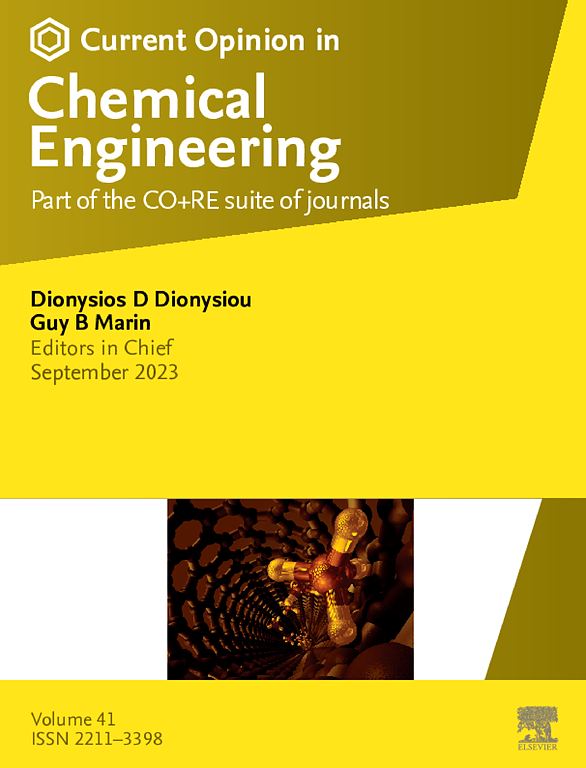通过理论计算和数值模拟了解自由基开环聚合法合成和降解主干可解构(co)聚合物
IF 6.8
2区 工程技术
Q1 BIOTECHNOLOGY & APPLIED MICROBIOLOGY
引用次数: 0
摘要
自由基开环聚合(rROP)由于可切割基团(如酯、硫酯)容易结合到全碳乙烯基骨架聚合物中而受到广泛关注。可切割共聚物的包含使乙烯基共聚物可生物降解。然而,环单体开环与不开环的乙烯加成之间的竞争,以及可切割共聚单体在主链中的有效插入,是rROP面临的挑战。这篇综述讨论了rROP理论和数值模拟的最新进展,为聚合和降解过程提供了深入的见解,包括机理识别、动力学特征和链微观结构调整。此外,还包括挑战和未来的方向,以吸引更多的努力,更好地执行rROP和解构过程。本文章由计算机程序翻译,如有差异,请以英文原文为准。
Understanding synthesis and degradation of backbone deconstructable (co)polymers by radical ring-opening polymerization through theoretical calculation and numerical simulation
Radical ring-opening polymerization (rROP) has gained widespread attention due to the facile incorporation of cleavable groups (e.g. ester, thioesters) into all-carbon backbone vinyl polymers. The inclusion of a cleavable comonomer makes the vinyl copolymers biodegradable. However, competition between the ring-opening of cyclic monomer and vinyl addition without ring-opening, as well as efficient insertion of cleavable comonomer into the backbone, are challenging for rROP. This minireview discusses the latest developments in theoretical and numerical simulations of rROP, offering deep insights into both polymerization and degradation processes, including mechanistic identification, kinetic features, and chain microstructure tuning. Besides, challenges and future directions are included to attract more efforts to better perform rROP and deconstruction process.
求助全文
通过发布文献求助,成功后即可免费获取论文全文。
去求助
来源期刊

Current Opinion in Chemical Engineering
BIOTECHNOLOGY & APPLIED MICROBIOLOGYENGINE-ENGINEERING, CHEMICAL
CiteScore
12.80
自引率
3.00%
发文量
114
期刊介绍:
Current Opinion in Chemical Engineering is devoted to bringing forth short and focused review articles written by experts on current advances in different areas of chemical engineering. Only invited review articles will be published.
The goals of each review article in Current Opinion in Chemical Engineering are:
1. To acquaint the reader/researcher with the most important recent papers in the given topic.
2. To provide the reader with the views/opinions of the expert in each topic.
The reviews are short (about 2500 words or 5-10 printed pages with figures) and serve as an invaluable source of information for researchers, teachers, professionals and students. The reviews also aim to stimulate exchange of ideas among experts.
Themed sections:
Each review will focus on particular aspects of one of the following themed sections of chemical engineering:
1. Nanotechnology
2. Energy and environmental engineering
3. Biotechnology and bioprocess engineering
4. Biological engineering (covering tissue engineering, regenerative medicine, drug delivery)
5. Separation engineering (covering membrane technologies, adsorbents, desalination, distillation etc.)
6. Materials engineering (covering biomaterials, inorganic especially ceramic materials, nanostructured materials).
7. Process systems engineering
8. Reaction engineering and catalysis.
 求助内容:
求助内容: 应助结果提醒方式:
应助结果提醒方式:


